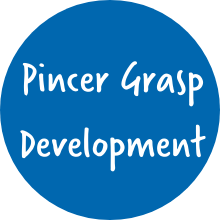Winter Boredom Buster: DIY Fake Snow!
- Patria Lincoln Posted On Dec 14, 2022 | STEM
This is a demo store. No orders will be fulfilled.

 Build three different vehicles from just one set of mix-and-match parts with the 1-2-3 Build It! Rocket-Train-Helicopter . Chunky, easy-to-handle parts let kids build and rebuild on their own before embarking on imaginative journeys to far-off destinations—blast off to distant stars aboard a rocket, fly through the air above a make-believe city with a helicopter, or chug down the tracks toward the station with a train.
Build three different vehicles from just one set of mix-and-match parts with the 1-2-3 Build It! Rocket-Train-Helicopter . Chunky, easy-to-handle parts let kids build and rebuild on their own before embarking on imaginative journeys to far-off destinations—blast off to distant stars aboard a rocket, fly through the air above a make-believe city with a helicopter, or chug down the tracks toward the station with a train. Get ready for endless fun with our famous Mathlink Cubes! High-quality plastic cubes measure ¾” each and come in 10 bright colors. These stackable cubes are easy for little hands to connect and twist apart. Great for counting to 100 by ones and tens, grouping, and one-to-one correspondence. These cubes are also great for building, sequencing, and patterns!
Get ready for endless fun with our famous Mathlink Cubes! High-quality plastic cubes measure ¾” each and come in 10 bright colors. These stackable cubes are easy for little hands to connect and twist apart. Great for counting to 100 by ones and tens, grouping, and one-to-one correspondence. These cubes are also great for building, sequencing, and patterns! Drivers, start your learning engines! Shape, color, and number recognition skills zoom around the track, past the checkered flag, and into your toy box with the Speedy Shapes Racers from Learning Resources. Shaped like old-fashioned racing roadsters, these five colorful race-cars combine skill-building lessons about shapes, colors, and numbers with fun imaginative play opportunities.
Drivers, start your learning engines! Shape, color, and number recognition skills zoom around the track, past the checkered flag, and into your toy box with the Speedy Shapes Racers from Learning Resources. Shaped like old-fashioned racing roadsters, these five colorful race-cars combine skill-building lessons about shapes, colors, and numbers with fun imaginative play opportunities.
 Which creature will you discover? Turn your kids’ love of collectible toys into a real-world science adventure with the Beaker Creatures Reactor Pod from Learning Resources. Within each mysterious Reactor Pod lurks one of 35 Beaker Creatures. They are tiny alien travelers from five planets who’ve come to Earth in search of learning fun. To discover which creature you’ve got, drop the pod into a container of water, watch the bubbling reaction, and extract the creature within! Get your pods at Amazon!!Single Pod - https://amzn.to/2URmjK0 2-Pack - https://amzn.to/2ECGkPw 6-Pack - https://amzn.to/2Lm4MoT
Which creature will you discover? Turn your kids’ love of collectible toys into a real-world science adventure with the Beaker Creatures Reactor Pod from Learning Resources. Within each mysterious Reactor Pod lurks one of 35 Beaker Creatures. They are tiny alien travelers from five planets who’ve come to Earth in search of learning fun. To discover which creature you’ve got, drop the pod into a container of water, watch the bubbling reaction, and extract the creature within! Get your pods at Amazon!!Single Pod - https://amzn.to/2URmjK0 2-Pack - https://amzn.to/2ECGkPw 6-Pack - https://amzn.to/2Lm4MoT 
 Build three different vehicles from just one set of mix-and-match parts with the 1-2-3 Build It! Rocket-Train-Helicopter . Chunky, easy-to-handle parts let kids build and rebuild on their own before embarking on imaginative journeys to far-off destinations—blast off to distant stars aboard a rocket, fly through the air above a make-believe city with a helicopter, or chug down the tracks toward the station with a train.
Build three different vehicles from just one set of mix-and-match parts with the 1-2-3 Build It! Rocket-Train-Helicopter . Chunky, easy-to-handle parts let kids build and rebuild on their own before embarking on imaginative journeys to far-off destinations—blast off to distant stars aboard a rocket, fly through the air above a make-believe city with a helicopter, or chug down the tracks toward the station with a train. Get ready for endless fun with our famous Mathlink Cubes! High-quality plastic cubes measure ¾” each and come in 10 bright colors. These stackable cubes are easy for little hands to connect and twist apart. Great for counting to 100 by ones and tens, grouping, and one-to-one correspondence. These cubes are also great for building, sequencing, and patterns!
Get ready for endless fun with our famous Mathlink Cubes! High-quality plastic cubes measure ¾” each and come in 10 bright colors. These stackable cubes are easy for little hands to connect and twist apart. Great for counting to 100 by ones and tens, grouping, and one-to-one correspondence. These cubes are also great for building, sequencing, and patterns! Drivers, start your learning engines! Shape, color, and number recognition skills zoom around the track, past the checkered flag, and into your toy box with the Speedy Shapes Racers from Learning Resources. Shaped like old-fashioned racing roadsters, these five colorful race-cars combine skill-building lessons about shapes, colors, and numbers with fun imaginative play opportunities.
Drivers, start your learning engines! Shape, color, and number recognition skills zoom around the track, past the checkered flag, and into your toy box with the Speedy Shapes Racers from Learning Resources. Shaped like old-fashioned racing roadsters, these five colorful race-cars combine skill-building lessons about shapes, colors, and numbers with fun imaginative play opportunities.
 Which creature will you discover? Turn your kids’ love of collectible toys into a real-world science adventure with the Beaker Creatures Reactor Pod from Learning Resources. Within each mysterious Reactor Pod lurks one of 35 Beaker Creatures. They are tiny alien travelers from five planets who’ve come to Earth in search of learning fun. To discover which creature you’ve got, drop the pod into a container of water, watch the bubbling reaction, and extract the creature within! Get your pods at Amazon!!Single Pod - https://amzn.to/2URmjK0 2-Pack - https://amzn.to/2ECGkPw 6-Pack - https://amzn.to/2Lm4MoT
Which creature will you discover? Turn your kids’ love of collectible toys into a real-world science adventure with the Beaker Creatures Reactor Pod from Learning Resources. Within each mysterious Reactor Pod lurks one of 35 Beaker Creatures. They are tiny alien travelers from five planets who’ve come to Earth in search of learning fun. To discover which creature you’ve got, drop the pod into a container of water, watch the bubbling reaction, and extract the creature within! Get your pods at Amazon!!Single Pod - https://amzn.to/2URmjK0 2-Pack - https://amzn.to/2ECGkPw 6-Pack - https://amzn.to/2Lm4MoT 
Your holiday guests will be delighted as they arrive to your doorstep on a cold night greeted by these frosty, glowing lanterns. Oh what fun it will be when they learn your little scientists created the evening’s entryway décor!
It goes without saying that these lanterns work best in freezing temperatures. Should you choose to use them to light your holiday table, make sure to place them in a bowl for when they begin to melt!
This experiment involves the change of matter from a liquid to a solid (and eventually back to a liquid).
You will need:
• Plastic red cups
• Smaller plastic cups that can fit inside
• Decorations - glitter pipe cleaners, craft pom poms, glitter, pine sprigs, etc.
• Water
• Tape
• Food coloring
• Candles (battery-operated is probably best)






Grab one of your red cups, and twist pipe cleaners up the length of the cup. This part requires some engineering inspiration and small hands. How do you get them to stay up? If you choose, add some craft pom poms. Working on the pom poms to stay suspended in the pipe cleaners also creates a unique challenge. Think!
Next, pull out a long piece of tape and attach it to one side of the cup near the lip. The tape will be the important piece that will hold down the second cup, so it doesn’t float. Basically, have the tape ready before you pour in the water.










Fill the cup about half full with water. Add a few drops of food coloring if you would like at this time.
Place the smaller cup into the bigger, red cup. Pour your water in between the two cups, so it fills until about a half inch below the rim. You’ll want to push down on the smaller cup the entire time because the goal is to have the two rims even with each other.
Secure your second cup in place with the tape.
Place in the freezer overnight.
When you are ready to place your lanterns out for all to enjoy, remove them from the fridge and give yourself about 5 minutes. This is the perfect time to discuss the scientific changes you observe.
• The water is now frozen.
• The frozen water has pushed the small cup up.
• The frozen water has perhaps even changed the shape of the outer cup.








Remove the inner cup with a little tug and turn the red cup upside down to shake out the ice lantern. Time is not on your side handling the frozen lanterns, as they will melt quickly.
Showcase them with a battery-operated candle any place around the house where you’d like to wow your guests!
Your holiday guests will be delighted as they arrive to your doorstep on a cold night greeted by these frosty, glowing lanterns. Oh what fun it will be when they learn your little scientists created the evening’s entryway décor!
It goes without saying that these lanterns work best in freezing temperatures. Should you choose to use them to light your holiday table, make sure to place them in a bowl for when they begin to melt!
This experiment involves the change of matter from a liquid to a solid (and eventually back to a liquid).
You will need:
• Plastic red cups
• Smaller plastic cups that can fit inside
• Decorations - glitter pipe cleaners, craft pom poms, glitter, pine sprigs, etc.
• Water
• Tape
• Food coloring
• Candles (battery-operated is probably best)






Grab one of your red cups, and twist pipe cleaners up the length of the cup. This part requires some engineering inspiration and small hands. How do you get them to stay up? If you choose, add some craft pom poms. Working on the pom poms to stay suspended in the pipe cleaners also creates a unique challenge. Think!
Next, pull out a long piece of tape and attach it to one side of the cup near the lip. The tape will be the important piece that will hold down the second cup, so it doesn’t float. Basically, have the tape ready before you pour in the water.










Fill the cup about half full with water. Add a few drops of food coloring if you would like at this time.
Place the smaller cup into the bigger, red cup. Pour your water in between the two cups, so it fills until about a half inch below the rim. You’ll want to push down on the smaller cup the entire time because the goal is to have the two rims even with each other.
Secure your second cup in place with the tape.
Place in the freezer overnight.
When you are ready to place your lanterns out for all to enjoy, remove them from the fridge and give yourself about 5 minutes. This is the perfect time to discuss the scientific changes you observe.
• The water is now frozen.
• The frozen water has pushed the small cup up.
• The frozen water has perhaps even changed the shape of the outer cup.








Remove the inner cup with a little tug and turn the red cup upside down to shake out the ice lantern. Time is not on your side handling the frozen lanterns, as they will melt quickly.
Showcase them with a battery-operated candle any place around the house where you’d like to wow your guests!
Who doesn’t love a good snow globe? Each one is a spellbinding combination of swirling, swishing liquid, and falling glitter that is perfect for sensory play. As mesmerizing as they are, did you know that snow globes are actually an experiment regarding the scientific principle of viscosity?
Let’s apply the standard of viscosity by creating a Snowman Snow Globe. We’ll put it together and then explain why it works.
You will need the following:






First, let’s get our snow globe looking like a snowman. Using a sharpie marker, draw on the eyes and buttons.
Second, you can draw on the carrot nose, but we used leftover orange sticky craft paper here.
Next, select a pipe cleaner to tie around under his carrot nose for a little scarf.
The man needs a top hat, right? Wrap the cap in black tape for his hat.








Now that he’s dressed and ready to go, squirt the clear glue into the bottle. We added more glue to one of our bottles. Will more thick glue make the glitter move slower or faster?
Next, sprinkle in your glitter and drop in the items that will float.
Now it’s time to watch the snow fly!
So what does viscosity mean for the snow globe?
The viscosity of a fluid is its relative “thickness.” Think of glue or maple syrup. Both are thick and slow. Viscosity is measured by its resistance to a stress factor. In the case of our snow globe, the stress is the water and shaking motion. Compared to the water, it is much thicker, slowing the fall of our glitter, snowflakes, and jingle bells.


The snow globe we made with less glue moved the objects much faster through itself. Less viscosity = easier movement of objects.
Stay warm this winter!
Who doesn’t love a good snow globe? Each one is a spellbinding combination of swirling, swishing liquid, and falling glitter that is perfect for sensory play. As mesmerizing as they are, did you know that snow globes are actually an experiment regarding the scientific principle of viscosity?
Let’s apply the standard of viscosity by creating a Snowman Snow Globe. We’ll put it together and then explain why it works.
You will need the following:






First, let’s get our snow globe looking like a snowman. Using a sharpie marker, draw on the eyes and buttons.
Second, you can draw on the carrot nose, but we used leftover orange sticky craft paper here.
Next, select a pipe cleaner to tie around under his carrot nose for a little scarf.
The man needs a top hat, right? Wrap the cap in black tape for his hat.








Now that he’s dressed and ready to go, squirt the clear glue into the bottle. We added more glue to one of our bottles. Will more thick glue make the glitter move slower or faster?
Next, sprinkle in your glitter and drop in the items that will float.
Now it’s time to watch the snow fly!
So what does viscosity mean for the snow globe?
The viscosity of a fluid is its relative “thickness.” Think of glue or maple syrup. Both are thick and slow. Viscosity is measured by its resistance to a stress factor. In the case of our snow globe, the stress is the water and shaking motion. Compared to the water, it is much thicker, slowing the fall of our glitter, snowflakes, and jingle bells.


The snow globe we made with less glue moved the objects much faster through itself. Less viscosity = easier movement of objects.
Stay warm this winter!
Are you looking for a fun, screen-free activity for your little ones this holiday season? I highly recommend building Gumdrop Christmas Trees! The activity is inexpensive, has minimal setup, and is adored by people of all ages. Who doesn’t like incorporating candy into a project?!
Building structures from toothpicks and gumdrops is an excellent STEM activity incorporating science, learning, and math into play. All you need is a bunch of toothpicks and some spiced gumdrops. I had a hard time finding gumdrops locally (I was shocked since it is Christmas time!), so if you run into that issue, mini marshmallows will also work just as well.
I laid the supplies on the table and told my girls that we would try and build Christmas trees. They are only three and five years old, so they needed some advice on getting started. I explained that they first needed to build a base, and then after that, they would just add to it as they saw fit.
We talked and walked through the base building together. After that, they caught on to the process and began constructing their trees!


As the building continued, the girls would point out if the structure was wobbling, and I would show them how they could add support with more toothpicks.
Finally, all that was left was adding a yellow gumdrop star at the top.
This was a fun project and a wonderful way to incorporate a screen-free STEM activity into the holidays. If your children are a bit older, you can even set up a competition to see who can build the tallest or most elaborate tree. For younger kids, just providing the toothpicks and gumdrops will create an awesome fine motor STEM activity. Regardless of age, this is a fun project to do together as a family. It’s something that both kids and adults are sure to enjoy!
Are you looking for a fun, screen-free activity for your little ones this holiday season? I highly recommend building Gumdrop Christmas Trees! The activity is inexpensive, has minimal setup, and is adored by people of all ages. Who doesn’t like incorporating candy into a project?!
Building structures from toothpicks and gumdrops is an excellent STEM activity incorporating science, learning, and math into play. All you need is a bunch of toothpicks and some spiced gumdrops. I had a hard time finding gumdrops locally (I was shocked since it is Christmas time!), so if you run into that issue, mini marshmallows will also work just as well.
I laid the supplies on the table and told my girls that we would try and build Christmas trees. They are only three and five years old, so they needed some advice on getting started. I explained that they first needed to build a base, and then after that, they would just add to it as they saw fit.
We talked and walked through the base building together. After that, they caught on to the process and began constructing their trees!


As the building continued, the girls would point out if the structure was wobbling, and I would show them how they could add support with more toothpicks.
Finally, all that was left was adding a yellow gumdrop star at the top.
This was a fun project and a wonderful way to incorporate a screen-free STEM activity into the holidays. If your children are a bit older, you can even set up a competition to see who can build the tallest or most elaborate tree. For younger kids, just providing the toothpicks and gumdrops will create an awesome fine motor STEM activity. Regardless of age, this is a fun project to do together as a family. It’s something that both kids and adults are sure to enjoy!
I’m sure by now you have heard about how beneficial “STEM activities” are for children, but many of you may be wondering what that means or entails. STEM activities are anything that promotes curiosity and growth in the areas of science, technology, engineering, and math.
Although those topics may sound pretty advanced for a preschooler or young child, there are many easy ways to incorporate a love for these concepts in the early years! Curiosity, creativity, collaboration, and critical thinking are at the heart of STEM! These are traits that the youngest child can be encouraged to explore.
One fun topic that we’ve been interested in lately is coding! I would have never imagined that my three and 5-year-old would be excited about something that I thought was so complex, but boy was I wrong. Their fascination began when we started playing with various imaginative play toys to teach them coding, our favorite being Botley the Coding Robot. They were instantly intrigued by the reactions that resulted from the commands they typed in!
I loved watching their little minds click as they realized that each command change would create a different outcome. To foster their new love for this concept, I began providing additional screen-free activities to help them become better at following patterns and various steps. Here is a fun, holiday-themed coding activity you can easily create for your little one.




Pipe cleaners, pony beads, paper, and markers. Cut each pipe cleaner into three pieces and bend them into a candy cane shape. Next, select the colors or beads that you want to use. I recommend 2-3 colors for younger children, but you could use as many as you wish for an older child. Because the activity was for both of my daughters, I chose only red and green.
Lastly, take your paper and draw various candy canes on it, adding colored “bead dots” with your markers in the patterns or order you want your child to mirror.
Provide your child with pipe cleaner candy canes, beads, and paper. Ask them first to sort the beads into different color piles. Then, instruct them to create candy canes that match the ones on the paper. My girls loved this activity, and we hung the finished candy canes around our playroom as festive décor.




So there you have it: an inexpensive, low-prep, and screen-free way to introduce coding to your child! I hope that you found this informative and that it sheds some light on just how fun and easy STEM activities can be.
I’m sure by now you have heard about how beneficial “STEM activities” are for children, but many of you may be wondering what that means or entails. STEM activities are anything that promotes curiosity and growth in the areas of science, technology, engineering, and math.
Although those topics may sound pretty advanced for a preschooler or young child, there are many easy ways to incorporate a love for these concepts in the early years! Curiosity, creativity, collaboration, and critical thinking are at the heart of STEM! These are traits that the youngest child can be encouraged to explore.
One fun topic that we’ve been interested in lately is coding! I would have never imagined that my three and 5-year-old would be excited about something that I thought was so complex, but boy was I wrong. Their fascination began when we started playing with various imaginative play toys to teach them coding, our favorite being Botley the Coding Robot. They were instantly intrigued by the reactions that resulted from the commands they typed in!
I loved watching their little minds click as they realized that each command change would create a different outcome. To foster their new love for this concept, I began providing additional screen-free activities to help them become better at following patterns and various steps. Here is a fun, holiday-themed coding activity you can easily create for your little one.




Pipe cleaners, pony beads, paper, and markers. Cut each pipe cleaner into three pieces and bend them into a candy cane shape. Next, select the colors or beads that you want to use. I recommend 2-3 colors for younger children, but you could use as many as you wish for an older child. Because the activity was for both of my daughters, I chose only red and green.
Lastly, take your paper and draw various candy canes on it, adding colored “bead dots” with your markers in the patterns or order you want your child to mirror.
Provide your child with pipe cleaner candy canes, beads, and paper. Ask them first to sort the beads into different color piles. Then, instruct them to create candy canes that match the ones on the paper. My girls loved this activity, and we hung the finished candy canes around our playroom as festive décor.




So there you have it: an inexpensive, low-prep, and screen-free way to introduce coding to your child! I hope that you found this informative and that it sheds some light on just how fun and easy STEM activities can be.
This time of year bursts with discovery and wonder, so why not make the most of it? Take a break from the hustle and bustle to enjoy this simple chemistry experiment that features everyone’s favorite scientific ingredients: vinegar and baking soda.
Kids never tire of seeing this classic base and solid reaction. No matter the shape it takes, watching those bubbles grow will always make your little chemist erupt with excitement. Here we make little “evergreens” to demonstrate this scientific standard of chemical reactions.


First, pour 2 to 2 ½ cups of baking soda into the bowl. Feel free to scale these portions for the number of trees you want to make.
Next, add green food coloring and a splash of water.
Stir the mixture well. Add glitter for added sparkle. The mixture should be crumbly but should be able to pack tightly (similar to kinetic sand). The last thing you want it to be is soupy or clumpy.




Grab a white paper plate, and cut it in half.
Twist the plate into a cone shape. Tape the sides to keep the form.
Then pack the baking soda mixture into the cones. Be sure to pack it tightly—level off the top.
Make another round of snow-capped trees without food coloring. Add confetti for a special reveal.
Place all the cones on a cookie sheet and keep them in the freezer for at least six hours.




When your chemists are ready, pull your trees from the freezer. Grab a pie plate or dish with sides high enough to contain the liquid but low enough for your kids to see the reaction up close.
Pour the vinegar into a cup and add a little green food coloring. Your trees will be a bit more brilliant green if you add food coloring to the vinegar.
Carefully unwrap your trees from the paper plate cone over the pie plate, so any crumbles are caught.




Create your “forest” on the pie plate. Then using the eyedropper or pipette, drip the vinegar over the trees. The fizzing begin immediately!
The vinegar reveals the hidden snowflakes and glitter.
Once the forest is melted down, grab a spoon and stir it up. It was decided that the mess look liked soup the Grinch would like.
Repeat with other trees – the excitement level remains the same for each melting, fizzy tree! Happy holidays!




This time of year bursts with discovery and wonder, so why not make the most of it? Take a break from the hustle and bustle to enjoy this simple chemistry experiment that features everyone’s favorite scientific ingredients: vinegar and baking soda.
Kids never tire of seeing this classic base and solid reaction. No matter the shape it takes, watching those bubbles grow will always make your little chemist erupt with excitement. Here we make little “evergreens” to demonstrate this scientific standard of chemical reactions.


First, pour 2 to 2 ½ cups of baking soda into the bowl. Feel free to scale these portions for the number of trees you want to make.
Next, add green food coloring and a splash of water.
Stir the mixture well. Add glitter for added sparkle. The mixture should be crumbly but should be able to pack tightly (similar to kinetic sand). The last thing you want it to be is soupy or clumpy.




Grab a white paper plate, and cut it in half.
Twist the plate into a cone shape. Tape the sides to keep the form.
Then pack the baking soda mixture into the cones. Be sure to pack it tightly—level off the top.
Make another round of snow-capped trees without food coloring. Add confetti for a special reveal.
Place all the cones on a cookie sheet and keep them in the freezer for at least six hours.




When your chemists are ready, pull your trees from the freezer. Grab a pie plate or dish with sides high enough to contain the liquid but low enough for your kids to see the reaction up close.
Pour the vinegar into a cup and add a little green food coloring. Your trees will be a bit more brilliant green if you add food coloring to the vinegar.
Carefully unwrap your trees from the paper plate cone over the pie plate, so any crumbles are caught.




Create your “forest” on the pie plate. Then using the eyedropper or pipette, drip the vinegar over the trees. The fizzing begin immediately!
The vinegar reveals the hidden snowflakes and glitter.
Once the forest is melted down, grab a spoon and stir it up. It was decided that the mess look liked soup the Grinch would like.
Repeat with other trees – the excitement level remains the same for each melting, fizzy tree! Happy holidays!




 Shop UK Site
Shop UK Site